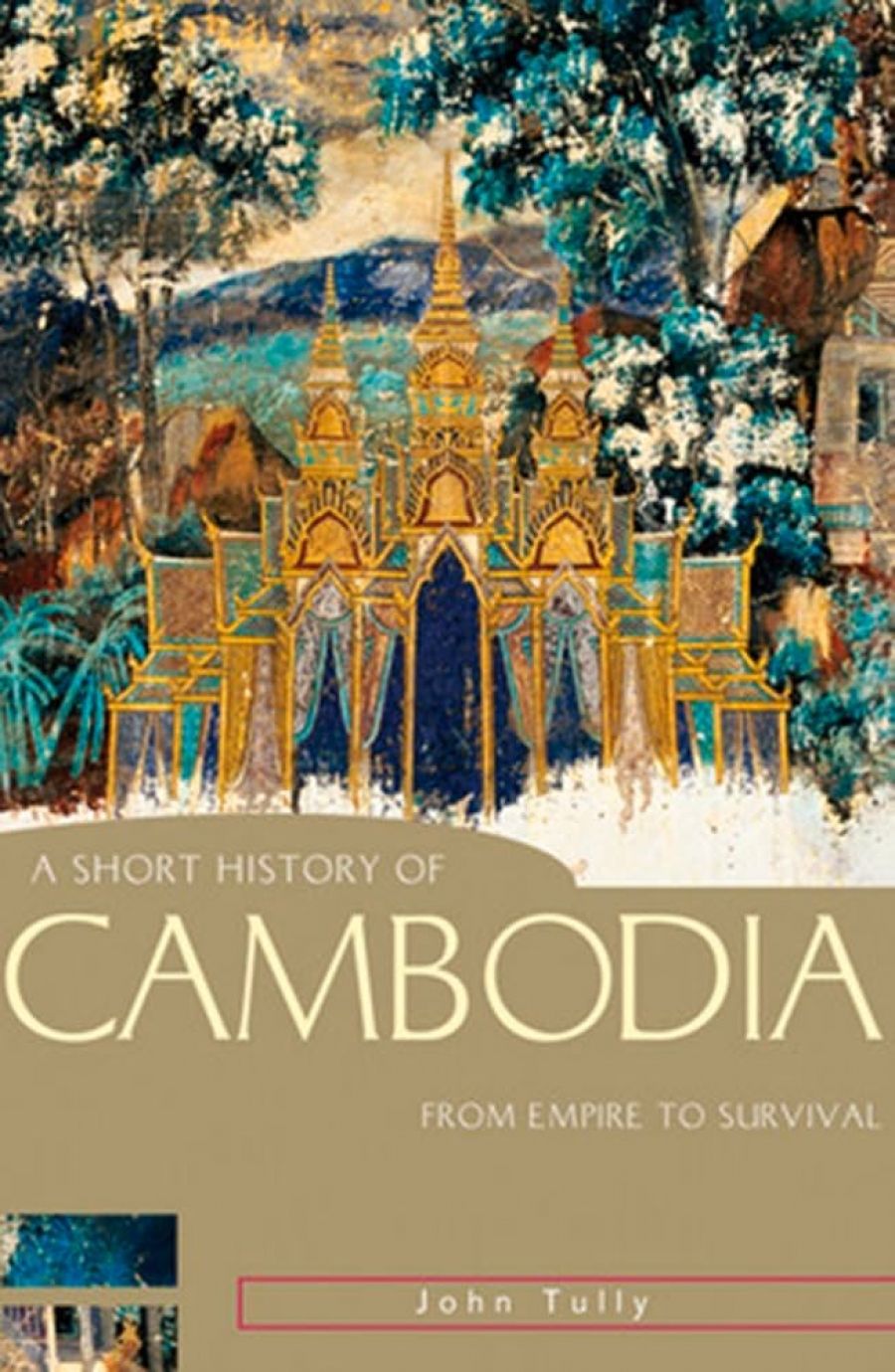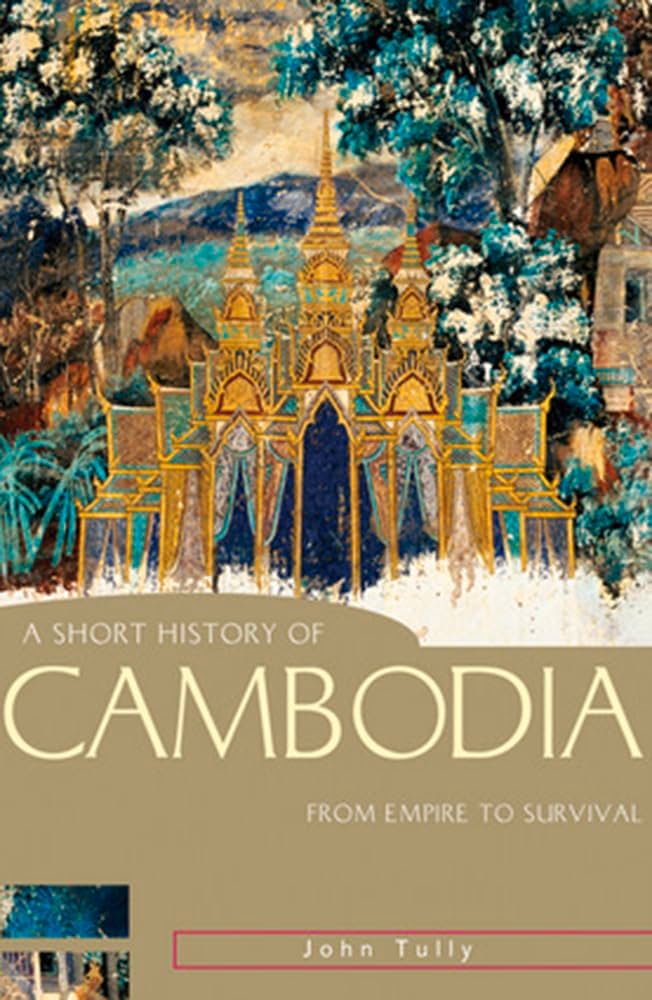
- Free Article: No
- Contents Category: History
- Review Article: Yes
- Online Only: No
- Custom Highlight Text:
Cambodia is best known for the Angkor temple complex, and for Pol Pot. This primer incorporates the famous monuments and the Killing Fields into 2000 years of history, from pre-Angkorean Funan to the present. As John Tully suggests, it suits ‘tourists, students and general readers’. Writing a ‘short history’ presents specific challenges: the author must balance a narrative that tells a comprehensible story with the reality that history is messy and contested. While Tully cannot avoid discussing eras, issues and personalities with haste, the chapter on the Angkorean civilisation is especially crammed. In part, this reflects his obligation to acknowledge scholarly disagreement, but a more detailed and leisurely account of the Angkor era would have been welcome. In contrast, the chapter on the French protectorate (1863–1953) is assured and authoritative, which is unsurprising since Tully previously wrote the majestic France on the Mekong: A History of the Protectorate in Cambodia, 1863–1953 (2002).
- Book 1 Title: A Short History of Cambodia
- Book 1 Subtitle: From empire to survival
- Book 1 Biblio: Allen & Unwin, $29.95 pb, 281 pp
- Book 1 Cover Small (400 x 600):

- Book 1 Cover (800 x 1200):

While Tully does not share, for example, Geoffrey Blainey’s ability to energise forgotten detail with an evocative turn of phrase, he is more willing than Blainey to acknowledge complexity. Although this sometimes disturbs the narrative’s flow, it is far preferable to oversimplification. Tully canvasses contrary views, but rarely equivocates. Discussing the weird outcome of the 1993 UN-run elections, when Cambodia found itself burdened with two prime ministers, he quotes journalist Henry Kamm’s view that the UN, ‘pleased with its successful elections, offered no objections to the perversion of their result’. But Tully adds: ‘To be fair, one wonders what they could have done about Hun Sen’s manoeuvres, short of waging war and plunging the country into a new abyss of chaos and destruction.’ This typifies Tully’s approach to recounting Cambodia’s tragic history: he is realistic and sensitive, as well as accessible.


Comments powered by CComment